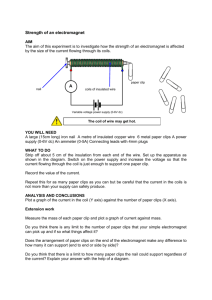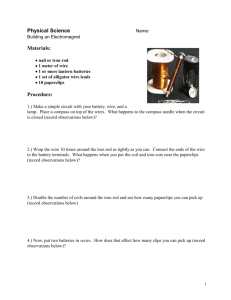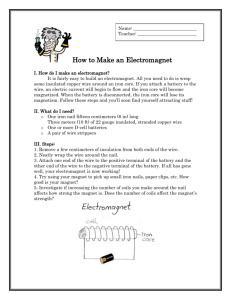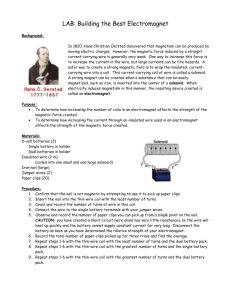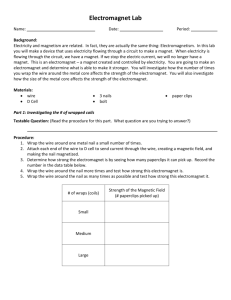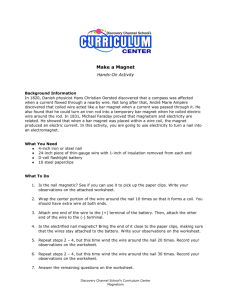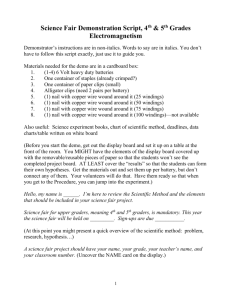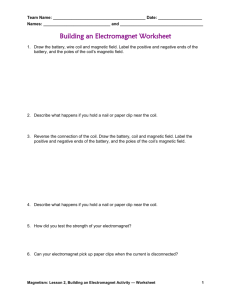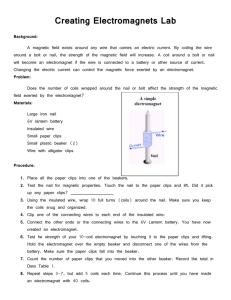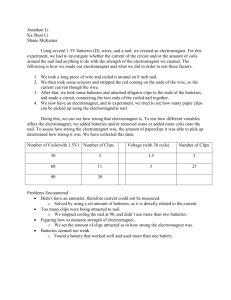EXAMPLE LAB REPORT
advertisement
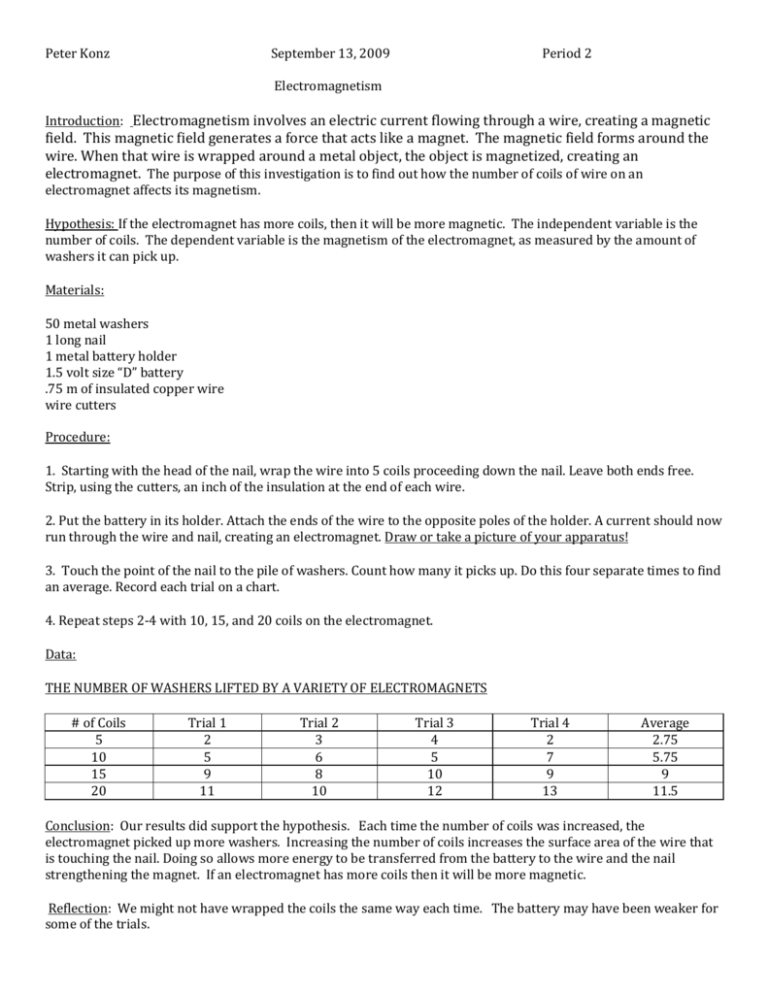
Peter Konz September 13, 2009 Period 2 Electromagnetism Introduction: Electromagnetism involves an electric current flowing through a wire, creating a magnetic field. This magnetic field generates a force that acts like a magnet. The magnetic field forms around the wire. When that wire is wrapped around a metal object, the object is magnetized, creating an electromagnet. The purpose of this investigation is to find out how the number of coils of wire on an electromagnet affects its magnetism. Hypothesis: If the electromagnet has more coils, then it will be more magnetic. The independent variable is the number of coils. The dependent variable is the magnetism of the electromagnet, as measured by the amount of washers it can pick up. Materials: 50 metal washers 1 long nail 1 metal battery holder 1.5 volt size “D” battery .75 m of insulated copper wire wire cutters Procedure: 1. Starting with the head of the nail, wrap the wire into 5 coils proceeding down the nail. Leave both ends free. Strip, using the cutters, an inch of the insulation at the end of each wire. 2. Put the battery in its holder. Attach the ends of the wire to the opposite poles of the holder. A current should now run through the wire and nail, creating an electromagnet. Draw or take a picture of your apparatus! 3. Touch the point of the nail to the pile of washers. Count how many it picks up. Do this four separate times to find an average. Record each trial on a chart. 4. Repeat steps 2-4 with 10, 15, and 20 coils on the electromagnet. Data: THE NUMBER OF WASHERS LIFTED BY A VARIETY OF ELECTROMAGNETS # of Coils 5 10 15 20 Trial 1 2 5 9 11 Trial 2 3 6 8 10 Trial 3 4 5 10 12 Trial 4 2 7 9 13 Average 2.75 5.75 9 11.5 Conclusion: Our results did support the hypothesis. Each time the number of coils was increased, the electromagnet picked up more washers. Increasing the number of coils increases the surface area of the wire that is touching the nail. Doing so allows more energy to be transferred from the battery to the wire and the nail strengthening the magnet. If an electromagnet has more coils then it will be more magnetic. Reflection: We might not have wrapped the coils the same way each time. The battery may have been weaker for some of the trials.


